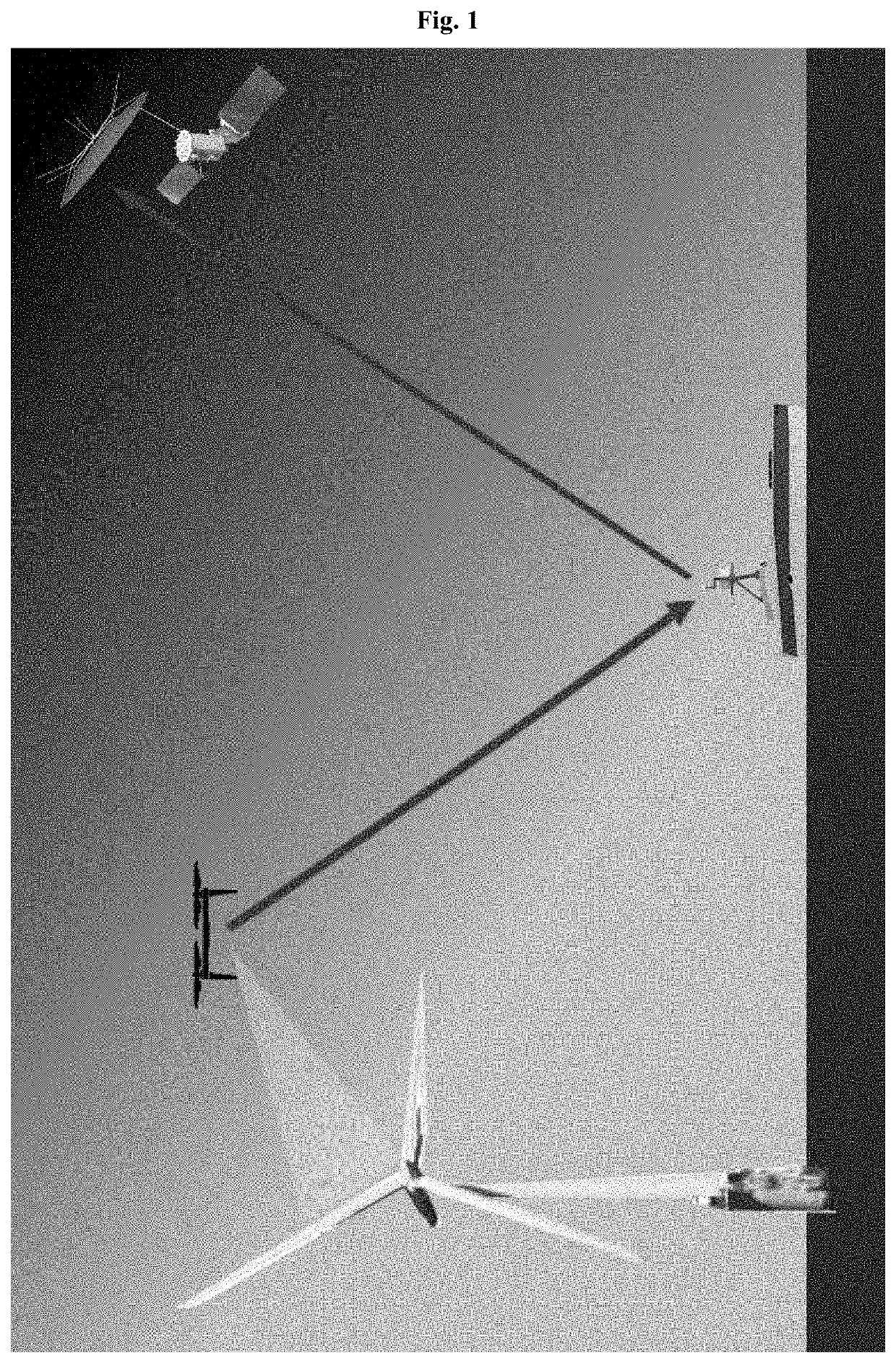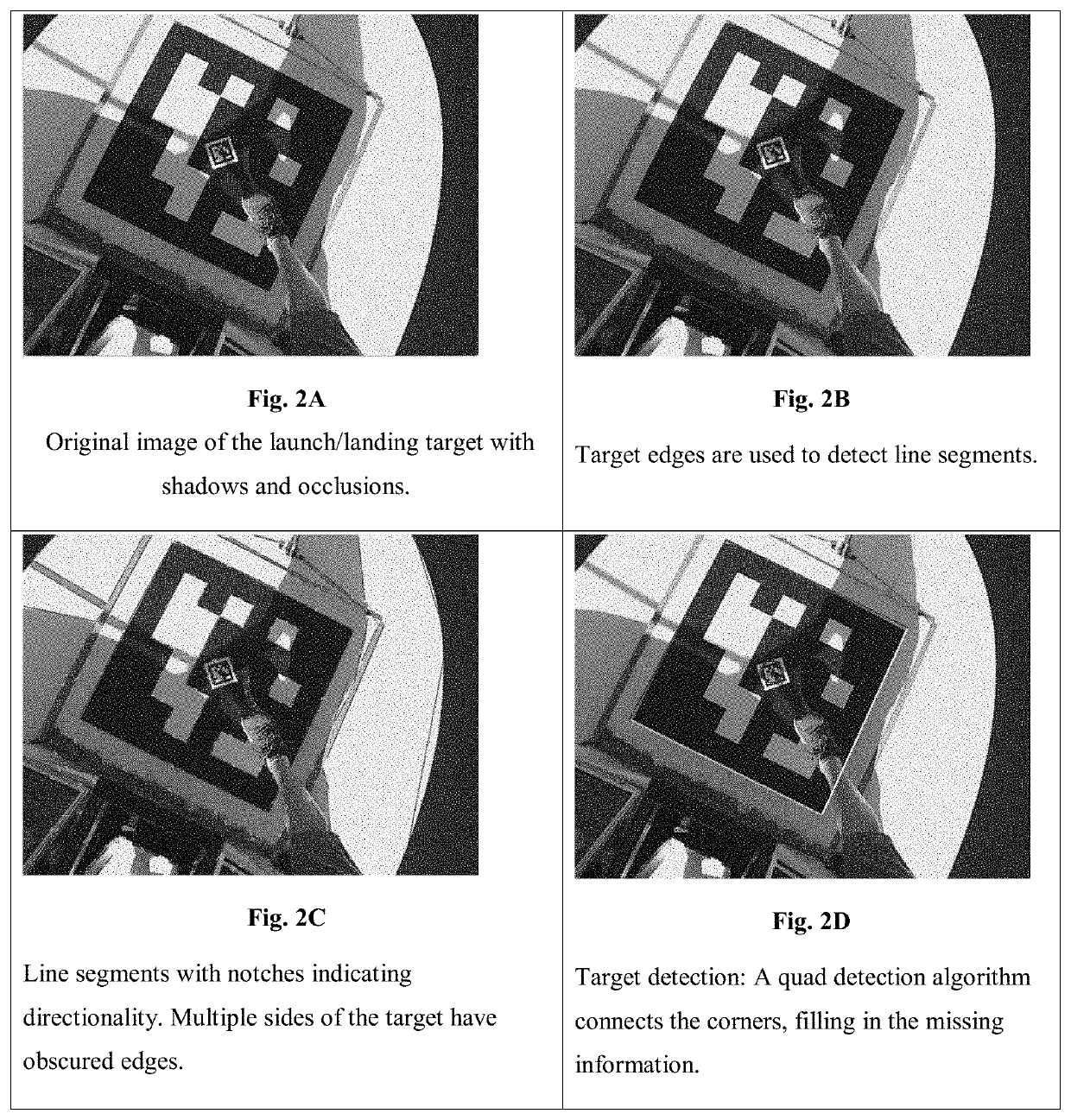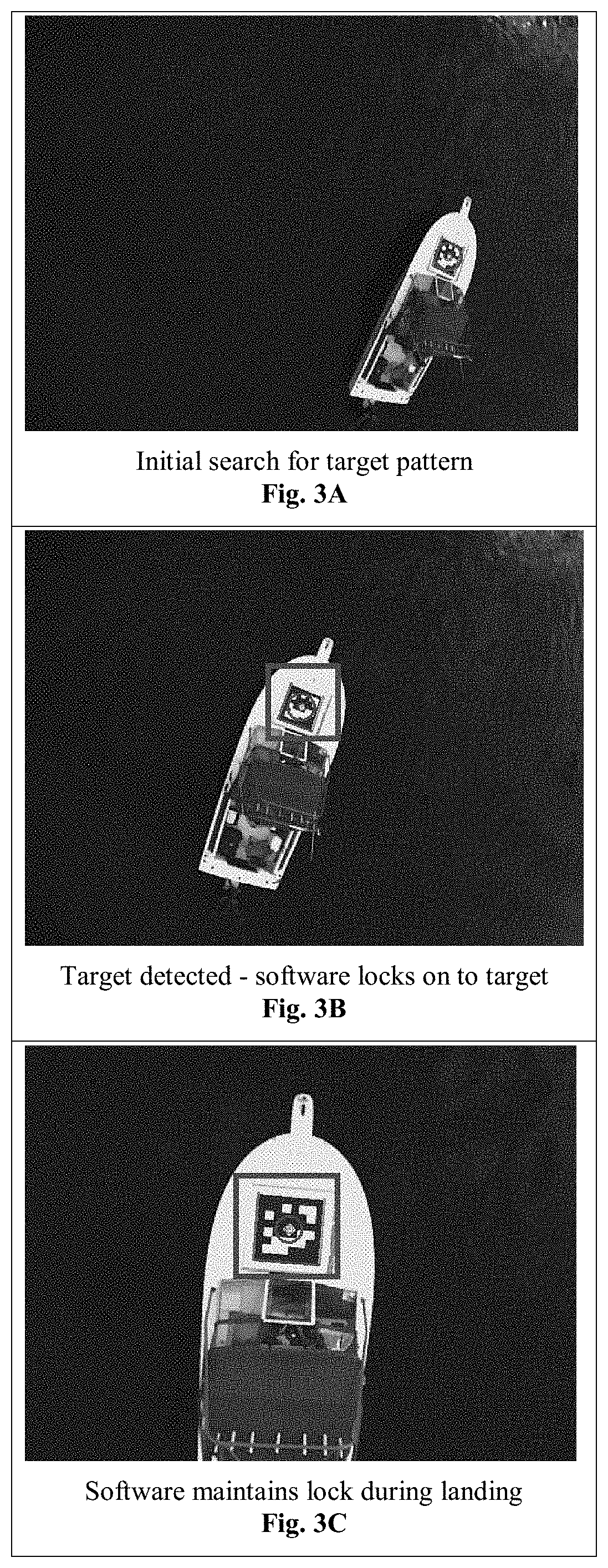Systems and methods for charging unmanned aerial vehicles on a moving platform
a technology for unmanned aerial vehicles and charging systems, applied in vehicle position/course/altitude control, process and machine control, instruments, etc., can solve the problems of high risk, high cost, and high cost of current inspection techniques, so as to reduce the risk associated, improve efficiency, and cost saving
- Summary
- Abstract
- Description
- Claims
- Application Information
AI Technical Summary
Benefits of technology
Problems solved by technology
Method used
Image
Examples
example 1
[0125]In a particular case, a UAV-USV team is deployed in an offshore wind farm. USV is pre-programmed with a route that transits to each turbine and pauses while the UAV inspects the turbine. When the USV reaches each turbine, the UAV autonomously launches from the USV. The UAV uses a pre-programmed flight pattern, together with active obstacle avoidance, to collect high resolution imagery of the entire wind turbine, from all sides, while the turbine is operating. Additional sensor data such as LIDAR and infrared (IR) could be included as well. The complete automated aerial inspection takes as little as 20 minutes. When the aerial inspection is complete, the UAV returns to the USV and executes an autonomous landing onto the USV deck. (Autonomous landings must be precise and reliable despite USV motion, wave action, and wind. Collected imagery is downloaded to the USV, stored, and transmitted to a remote user over SATCOM, 4G, or other means. Optionally, computer vision algorithms on...
example 2
[0126]A UAV-USV system is deployed in the North Sea to inspect offshore wind turbines. This is a harsh environment and risky to send people out. Furthermore, it is costly to shut down the wind turbines to conduct a manned inspection. When the UAV-USV system gets close to a wind turbine, the UAV launches from the USV and fly to close proximity of the turbine and capture high resolution images of it. During this process, the UAV's battery is depleted, so it returns to the USV and executes a precision landing on the charging platform. The USV begins to transit to the next wind turbine. Meanwhile, the charging platform is turned “on” and begins charging the UAV's batteries, via conduction or induction. When the battery is fully charged, the aircraft is ready to conduct another inspection, and the entire process starts anew.
example 3
[0127]Peacekeeping forces are deployed to a hostile area. Some of these troops are tasked with forward reconnaissance to ensure safe passage of a humanitarian aid convoy. These troops are inside an armored vehicle equipped with a drone on the roof. Before they enter a new area, the drone is launched from the roof of their moving vehicle and flies along their planned route, and provides live imagery to the peacekeeping troops in the vehicle. After the imagery is collected, the drone automatically returns to the moving vehicle and lands itself on a platform that rapidly recharges the batteries through conduction, without the need for a human to leave the security of the vehicle. The drone is then ready for its next flight as the troops enter a new hostile zone. In this scenario, it is plausible that the manned vehicle could be replaced with an unmanned ground vehicle.
PUM
 Login to View More
Login to View More Abstract
Description
Claims
Application Information
 Login to View More
Login to View More - R&D
- Intellectual Property
- Life Sciences
- Materials
- Tech Scout
- Unparalleled Data Quality
- Higher Quality Content
- 60% Fewer Hallucinations
Browse by: Latest US Patents, China's latest patents, Technical Efficacy Thesaurus, Application Domain, Technology Topic, Popular Technical Reports.
© 2025 PatSnap. All rights reserved.Legal|Privacy policy|Modern Slavery Act Transparency Statement|Sitemap|About US| Contact US: help@patsnap.com



